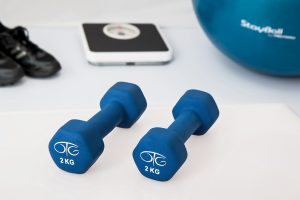The Role of UX Design in Fitness Technology
In recent years, fitness technology has experienced a significant transformation. From wearable devices to mobile applications, these innovations have revolutionized the way individuals track and improve their overall health and well-being. One crucial aspect that contributes to the success of these fitness technologies is user experience (UX) design.

Understanding User Experience (UX)
User experience refers to how users interact with a product or system – in this case, fitness technology. It encompasses various elements such as ease of use, accessibility, visual appeal, and overall satisfaction during interaction. A well-designed UX can significantly enhance engagement levels and increase the adoption rate among users.
Aesthetically pleasing interfaces combined with intuitive navigation create an immersive experience for individuals using fitness technology solutions. By making it easy for users to find what they need and understand how to navigate through different features seamlessly, UX design plays a pivotal role in ensuring customer satisfaction.
Enhanced Motivation Through Engaging Designs
Fitness is as much about physical exertion as it is about maintaining motivation over time. Here’s where effective UX designs play a vital role by offering engaging experiences that keep users motivated on their wellness journey.
Gamification techniques are often employed by fitness apps or wearables utilizing well-crafted graphics and interactive elements like progress bars or achievement badges. These game-like features provide instant feedback on accomplishments while fostering healthy competition amongst friends or other app users within online communities.
Catering to Individual Needs: Personalization
One size doesn’t fit all when it comes to personal goals related to health management; therefore personalized experiences become essential components within modern-day fitness technologies.
- Sophisticated algorithms analyze data collected from individual profiles along with real-time tracking to provide personalized recommendations and insights. This information helps users stay motivated, make informed decisions about their fitness journey, and achieve their desired outcomes.
- Customizable settings allow individuals to tailor the app or wearable device according to their preferences. Whether it’s adjusting notification frequency or modifying activity goals, personalization empowers users by giving them control over how they engage with technology.
Seamless Integration of Data
The integration of various data points is another crucial aspect in today’s fitness technologies. UX design ensures that this process is seamless so that users can effortlessly view and analyze all relevant information from one central location.
Cross-platform compatibility allows for smooth synchronization between smartphones, wearables, and desktop applications. Users no longer need to switch between different devices or manually input data multiple times as a result of well-designed UX experiences.
By enabling easy access to comprehensive health summaries including steps taken, calories burned, heart rate trends along with sleep patterns – fitness technologies empower individuals to take greater control of their overall well-being.
In Summary
User experience (UX) design plays an instrumental role in shaping the success of modern-day fitness technology solutions. By offering visually appealing interfaces combined with intuitive navigation systems, fitness apps and wearables create immersive user experiences that keep people engaged on their wellness journeys.
Through gamification techniques like progress bars or achievement badges, users are further motivated by instant feedback on accomplishments while fostering healthy competition within online communities.
Personalized experiences catered towards individual needs ensure engagement remains high throughout each user’s unique goals.
Sophisticated algorithms collect data from profiles alongside real-time tracking providing tailored recommendations helping individuals reach desired outcomes.
Lastly, seamlessly integrating various data points across platforms offers convenience by presenting comprehensive health summaries empowering users to manage every aspect related to their physical exertion.
With user experience design at the forefront, fitness technology continues to evolve and enhance our lives by providing innovative solutions that optimize health and well-being.


Leave a Reply